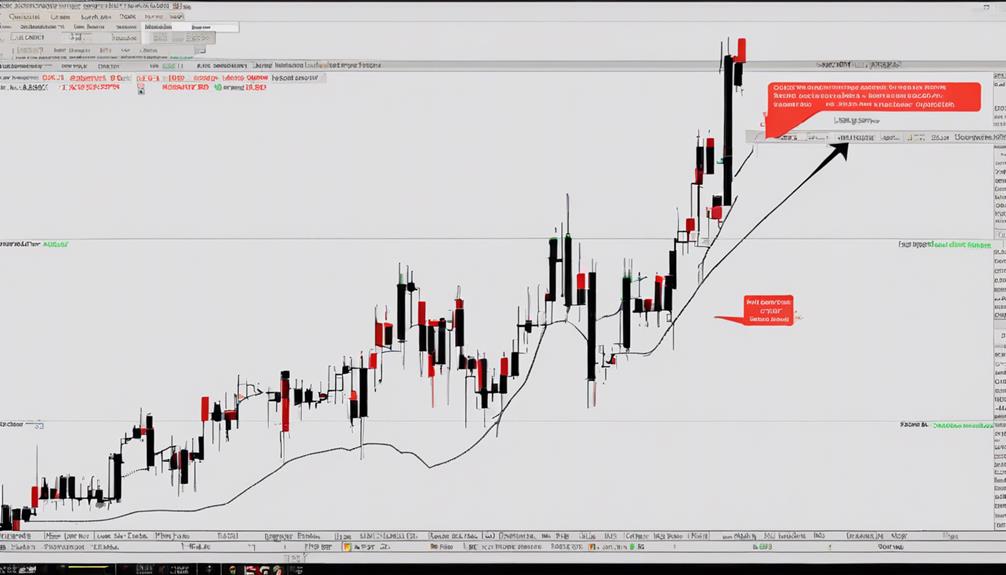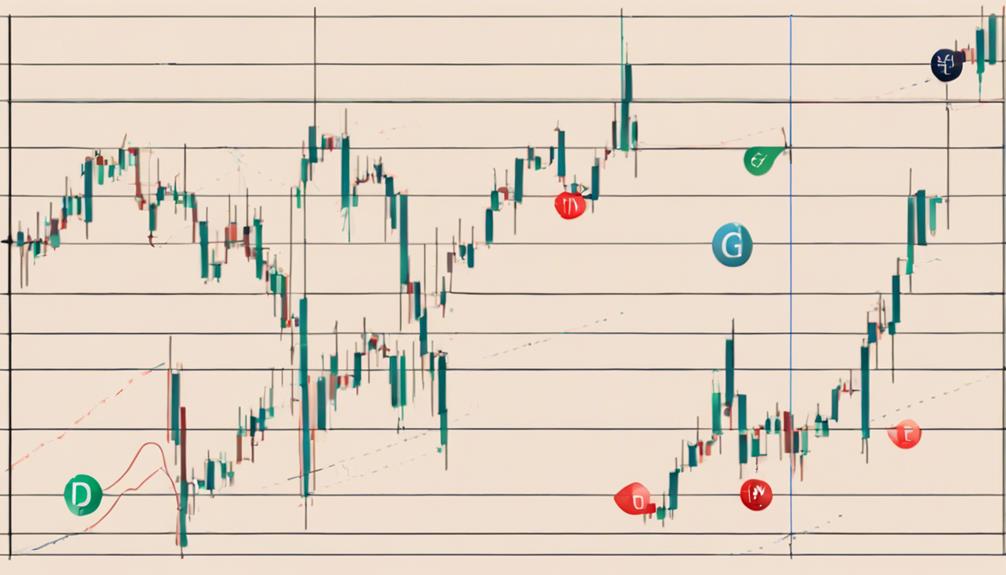Are you aware of the key candlestick patterns crucial for successful commodity trading? Understanding these patterns can significantly impact your trading decisions and outcomes.
By incorporating these essential candlestick patterns into your analysis, you can gain valuable insights into market trends and potential reversals.
Stay tuned to discover how these patterns can enhance your commodity trading strategies and elevate your trading skills to the next level.
Common Candlestick Patterns for Commodities
When trading commodities, recognizing common candlestick patterns is crucial for identifying potential price movements. These patterns serve as valuable tools for traders in the commodity markets, signaling possible price reversals or continuations. For instance, a Doji pattern suggests market indecision, while a Hammer indicates strong buying pressure. An Engulfing pattern may signify a shift in market sentiment. Understanding these patterns can help traders make informed decisions based on historical price data.
Bullish Candlestick Patterns in Trading

To effectively capitalize on potential price reversals in commodity trading, understanding bullish candlestick patterns is essential. These patterns, such as Hammer, Inverse Hammer, and Bullish Engulfing, indicate possible market bottoms and opportunities for long positions. They highlight increased buying pressure and potential market strength.
The Hammer pattern shows strong buying interest at market lows and can signal a reversal from a downtrend. Inverse Hammer suggests that buyers are regaining control after a decline, potentially marking a trend reversal. The Bullish Engulfing pattern, a clear victory for buyers, often appears after a downtrend, indicating a shift towards bullish sentiment in the market.
Recognizing and interpreting these bullish candlestick patterns can assist traders in making informed decisions when looking for potential price reversals and market opportunities.
Bearish Candlestick Patterns for Commodities

Bearish candlestick patterns in commodity trading serve as crucial indicators of potential market downturns and offer valuable insights for traders seeking to anticipate price reversals. These patterns include:
- Hanging Man: Indicates a potential market downturn after an uptrend.
- Shooting Star: Suggests a reversal in price movement, signaling a potential market downturn.
- Bearish Engulfing: Signifies a peak or slowdown in price momentum, indicating a shift towards lower prices.
Continuation Candlestick Patterns Explained

Continuation candlestick patterns serve as essential indicators for traders, highlighting temporary pauses in the current market trend before potentially resuming the previous direction. Examples of these patterns include the Three White Soldiers and Three Black Crows.
Traders utilize continuation patterns to confirm ongoing trends and make informed decisions about entering or exiting trades in alignment with the prevailing market direction. By recognizing these patterns, traders can identify opportunities to capitalize on the continuation of existing trends.
Understanding these signals is crucial for traders to navigate the market effectively and maximize their chances of success by strategically timing their trades based on the signals provided by continuation candlestick patterns.
Practicing Candlestick Pattern Recognition

Enhance your trading skills by actively practicing the recognition of candlestick patterns through studying their formations and characteristics. To improve your proficiency in commodity trading, consider the following tips:
- Engage in simulated trading: Utilize platforms that offer simulated trading to apply candlestick patterns in a risk-free environment, honing your skills before committing real capital.
- Identify key reversal patterns: Focus on recognizing patterns like Hammer, Engulfing, and Doji as they often signal potential changes in commodity prices.
- Regularly review price charts: Analyze historical price charts to spot various candlestick patterns, helping you make informed decisions based on past market behavior.
Are the Essential Candlestick Patterns for Commodity Trading also applicable to Intraday Trading?
Yes, the essential candlestick patterns for trading can be applied to both commodity trading and intraday trading. These patterns, such as the Doji, Evening Star, and Hammer, provide valuable insights into market trends and price movements, making them useful tools for all types of trading strategies.
Frequently Asked Questions
What Is the Candlestick Pattern in the Commodity Market?
In the commodity market, candlestick patterns analyze price movements. Recognizing patterns like Hammer, Doji, and Engulfing is crucial for understanding market sentiment shifts. Combining these patterns with technical indicators enhances your analysis for better decision-making.
What Is the Most Successful Candlestick Pattern?
You should watch out for the Bullish Engulfing pattern. It's the top performer, indicating a market sentiment switch from bearish to bullish. When spotted at critical levels, it hints at potential buying chances, a powerful tool for commodity trading.
What Is the 3 Candle Rule?
When trading, remember the 3 candle rule. Wait for the third candle after a pattern for confirmation. Analyzing it validates the signal, ensuring reliability. This practice avoids false signals and boosts trading accuracy.
What Is the Most Important Single Candlestick Pattern?
In commodity trading, the most crucial single candlestick pattern is the Hammer. It signals a potential price reversal after a downtrend, with a small body at the top and a long lower shadow. Buyers show strength.
Conclusion
Now you know the key candlestick patterns for commodity trading. Keep an eye out for the Hammer, Engulfing, Hanging Man, and Shooting Star patterns to spot potential reversals and trend changes.
Combine these patterns with technical indicators for confirmation. Practice recognizing them to sharpen your trading skills and improve your decision-making.
Remember, mastering these patterns and incorporating risk management strategies is essential for success in commodity markets. Happy trading!
